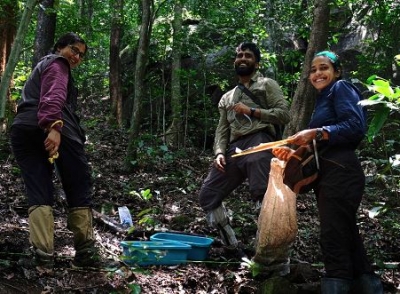Hyderabad– The Western Ghats of India is a global biodiversity hotspot with many woody plants, birds, mammals, reptiles, fishes and insects, among other life forms. Many of them are endemic, meaning they occur only in this area and nowhere else.
Studying what factors influence the species diversity and distribution patterns in a given area fascinates and has kept ecologists and evolutionary biologists busy over the last two centuries. Tools using information on how species are related to one another based on their DNA, have become important in examining the role of past climate on the community or species diversity patterns in the last two decades.
A new study in Dr Jahnavi Joshi’s group at the CSIR-Centre for Cellular and Molecular Biology, in collaboration with national and international institutions, sheds light on the evolution of plants in the Western Ghats region of India. The recent study has been published in the Proceedings of the Royal Society B.
They find that the evolutionary diversity is unevenly distributed across the Western Ghats, driven by past climatic and geographic processes and also by current climate. In addition, they have also seen the effects of niche conservatism for wet sites, wherein lineages tend to remain in the niche where they have evolved and continue to persist and even form a new species.
“This study complements several taxonomic studies in the region, which show the Western Ghats have a high diversity of woody plants, with over 60 per cent being endemic. Examination of the evolutionary diversity shows that southern Western Ghats serves as a “museum” and “cradle” of evolutionary diversity, which means it has both old and young (on evolutionary timescales in millions of years) species. These species also have restricted distribution in the southern Western Ghats, and interestingly this region has six times higher number of species than the northern Western Ghats,” said Abhishek Gopal, the first author of the study.
“Large scale studies like this which span a huge geographic area, looking at timescales in millions of years and includes hundreds of species are helpful as they help us understand if there are any generalities in how diversity is generated and maintained. We show that the Western Ghats hold tremendous evolutionary diversity. We highlight the global value of the Western Ghats, demonstrating, in particular, the importance of protecting the southern Western Ghats – an engine of plant diversification and persistence. The results of this study can also be used to augment the existing protected areas in the landscape, which are facing severe anthropogenic stress,” said Jahnavi Joshi, the senior author of this study. (IANS)














